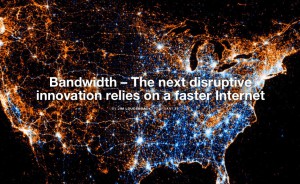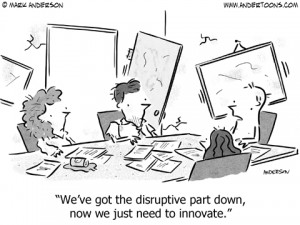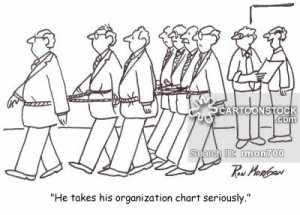Hall
Can a Culture of 100% Honesty Work?
I thought this article was interesting, especially in light of the discussion of performance reviews yesterday. It looks at a few different companies and their initiatives toward creating completely honest and transparent workplaces. A survey by 15Five indicates that 85% of employees are unsatisfied with the quality of communication at work. On top of this, 81% of full-time U.S. employees would rather join a company with open communication over companies that offer perks such as top health plans and gym memberships.
New York Computer Help
-Joe Silverman (Owner) says “Our motto is total transparency, and I strive to promote this from the staff level through the customer.” Silverman enforces this by dismissing employees on the spot who start to cut corners, or withhold information from customers.
-This honesty is also important in terms of training: “Any time a repair comes in, we ask who hasn’t done this before. Whoever says no gets a crash-test training how to do it.”
Quirky
-Chief People Officer Rochelle DiRie distinguishes between transparency and honesty by saying “Transparency is the surfacing of data and events; honesty is about your interpretation and desires.”
-Both transparency and honesty are strongly enforced at Quirky from senior management down, and are also included in the company’s core values. This mentality also includes never hiding bad news. “We ask our employees to always state their opinions, even if controversial.”
How important do you guys think honesty and transparency in the workplace are? Are there scenarios where withholding bad news is the better choice?
Convincing Skeptical Employees to Adopt New Technology
 As MIS majors, understanding the value of new technologies and being able to adapt to them is something that we take for granted. However, within the workplace there is often complacency among employees with existing technology and even hesitancy/fear to acquiring new products and systems.
As MIS majors, understanding the value of new technologies and being able to adapt to them is something that we take for granted. However, within the workplace there is often complacency among employees with existing technology and even hesitancy/fear to acquiring new products and systems.
https://hbr.org/2015/03/convincing-skeptical-employees-to-adopt-new-technology
In a study by MIT Sloan Management Review, 63% of managers said that the pace of technological change is too slow, due to a lack of urgency and poor communication of the benefits of new tools. Rebecca Knight of Harvard Business Review offers managers some advice for overcoming these obstacles with their employees:
1) Choose Technology Wisely: Bear your teams interest in mind. “Functionality is critical, but so is user-friendliness.”
2) State Your Case: Put forth a compelling vision of what the technology is and what it’s going to do.
3) Customize Training: Training efforts should reflect differences in familiarity and interest in technology; don’t be afraid to ask them what they want in a training.
4) Get Influencers Onboard: Create a “Network of Champions” fully invested in the new technology.
5) Make it Routine: “Implicity raise the cost of not using the new technology,” so they’re pushed towards routinely using the new tools.
6) Highlight Quick Wins: Draw attention to positive impacts.
7) Make it Fun: Reward the behavior you want to see (i.e. compensation, perks, recognition etc.)
8) Consider Penalties: Possibly penalize resistors for non-use.
Bandwidth and Disruptive Innovation
In this article, Louderback talks about how increasing bandwidth over the past few decades has disrupted different forms of media. The disruptions he discussed were:
1. Printing Publications
2. The Music Industry (disrupted by Napster, LimeWire, etc.)
3. Cable TV Companies
4. The Film Industry
However, now that we have the bandwidth capacity for accessing/streaming all of the traditional forms of media, Louderback identifies a couple trends of what new forms of media may be disruptive in the near future:
-Immersive Virtual Reality
-Personal Streaming (as seen in early experiments with SnapChat)
-Augmented Reality (Microsoft’s HoloLens)
But beyond these predictions, Louderback believes that the next disruptive media innovation may not have been invented yet. Do you guys agree with the trends that Louderback identified? Or do you have any other ideas on what new media disruptions might appear in the next decade?
A Lesson in Disruptive Innovation
http://www.cio.co.nz/article/565828/lesson-disruptive-innovation/
Jon Rice and Sean Walters were able to take the concept of disruptive innovation and apply it to the recruitment industry (which they said “was ripe for innovation”) by founding virtualRPO. As it’s name implies, it is a virtual platform that provides companies with their own dedicated recruitment professional, whose services they only pay for when they use.
All of their systems are cloud based and they boast that they can “deliver a better hire for half the cost.” This especially appeals to high growth companies, such as My Food Bag, because virtualRPO has contingent, flexible services that don’t force permanent and salaried recruitment functions.
Lastly, there is currently a rise in demands (that isn’t being met) for experience with cloud software, mobile, Enterprise applications and big data analytics, which is causing something of a talent war in this market segment. Tech and SaaS firms are seeking very similarly skilled individuals, so they are essentially competing against each other. This is a great opportunity for virtualRPO, as a low-cost recruiter, as technological companies need to seek third party help to find people with these skills.
Does your Corporate Structure Stifle your Innovation?
http://washingtontechnology.com/articles/2015/01/15/insights-davis-new-corporate-structures.aspx
By removing these “old fashioned” structures, companies:
1) Can spark innovation among employees who no longer feel confined by their organizational role.
2) Create more informal network relationships across organizational boundaries.
3) Distinguish themselves from competitors.
This article argues that old-style, hierarchical organizational structures are detrimental to technological companies. “It creates a straight jacket that makes organization adaptability to changes in the market impossible.” The argument is that the inflexibility of a rigid corporate structure creates a “straight jacket” for firms’ innovation, because employees are always consumed by the operations within their business unit.
Davis also argues that these organizational structures prevent network relationships across organizational boundaries. Creating incentives/rewards for this kind of communication needs to be available to drive cooperation.
Lastly, Davis points out that if all companies have a hierarchical organizational structure, that it is not distinguishing itself from its competitors. A person at Firm A can quit and start working a similar position at Firm B the next week, and would need minimal training because the systems/processes across these organizations are almost identical.
How To Succeed When Your Boss Doesn’t Have Time For You
This article suggests two pieces of advice for inattentive supervisors:
1) Take Charge- Set up a weekly or biweekly meeting with your boss in advance.
2) Find Feedback Elsewhere- Seek advice from experienced coworkers.
Personally, I think this article is terrible. If your only attempt for reaching out to a supervisor (before giving up and asking someone else) is setting up a meeting, then you’re probably going to end up disappointed. The whole reason you can’t meet with your boss is because (s)he doesn’t have enough time- so why would set up a meeting to take up more of his/her time?
A boss without any spare time is a perfect scenario to employ the skills we learned by doing elevator pitches. Utilize the time that they spend riding in elevators, taking the bus, walking to work etc.. That way, you’re not taking up more of their time, you’re just filling in the free space in which they really can’t do anything except stand/walk.
The Next Big Technological Hub
In class this week, we talked a lot about the internal structures of organizations, but what about the geographic location of it’s headquarters? We know that some sort of distribution is necessary to create redundancy (safety) for company data, but where companies locate it’s central “hub” is completely up to them.
http://www.lasvegassun.com/news/2015/jan/26/next-silicon-valley/
In this article, it discusses the prospect of Las Vegas becoming the new Silicon Valley. The article states that there is 6 major factors that will either make or break Vegas’ future:
1) Education
2) Connectivity
3) Financial
4) Transportation
5) Culture
6) Tony Hsieh’s Downtown Project
With a lost cost of living, cheap travel, a plethora of tech start-ups and a world-renowned reputation (whether good or bad), do you guys think that Las Vegas has the potential to become the next big technological hub?
Systems Thinking in the Public Sector
Africa: What Can Evaluators Learn From Complexity Science and Systems Thinking?
For the past few years, I have worked at a non-profit legal services provider. When I was reading the article about systems thinking that we were assigned for this class, I couldn’t help but think that although the idea made sense for information systems, it would never work in the some industries (namely in the legal field). Given the experience that I have working with lawyers, I couldn’t picture them ever looking at a problem holistically instead of drilling into the details because they are all very process-thinking oriented.
However, this article kind of served as a counter argument to my thinking. Here are public policymakers that are using systems thinking to integrate economic, social and environmental growth into a single ‘map of development.’ I think it’s cool that they were able to use systems thinking despite the fact that there is probably a significant amount of constraints when writing public policy, including (I’m assuming) a pretty strict budget. This article proves that systems thinking can be applied virtually any industry if you are willing to shift your mindset.
Updated Project Proposal- Public Service
Problem: An overwhelming amount of trash/litter in different regions of Philadelphia.






